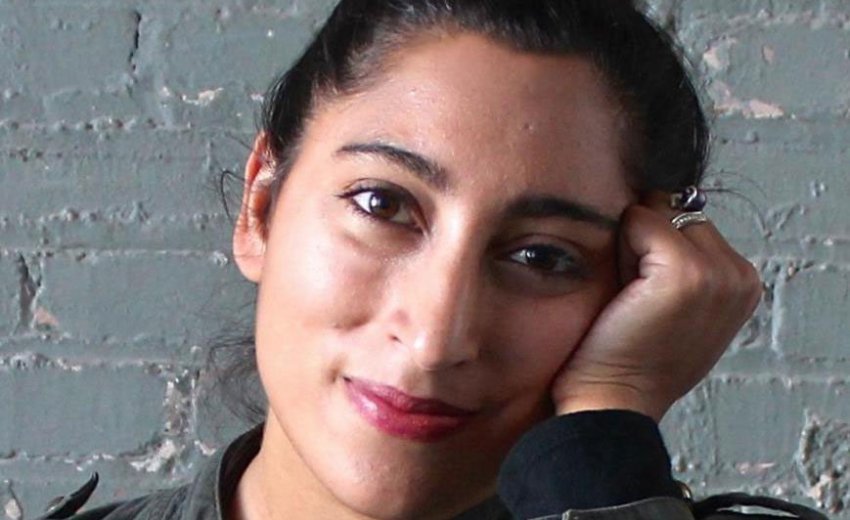 Lakhpreet
Kaur is the founder and editor-in-chief for Kaur Life
and serves of the board of SAFAR: The SikhFeminist Research
Institute. Lakhpreet earned a BA in Political Sciences at the
University of Wisconsin, Madison where she also received an Honors in
the Liberal Arts. She then went on to obtain her MA in International
Environmental Policy from the Monterey Institute of International
Studies and did a year of post-graduate studies at American
University studying international relations.
Lakhpreet
Kaur is the founder and editor-in-chief for Kaur Life
and serves of the board of SAFAR: The SikhFeminist Research
Institute. Lakhpreet earned a BA in Political Sciences at the
University of Wisconsin, Madison where she also received an Honors in
the Liberal Arts. She then went on to obtain her MA in International
Environmental Policy from the Monterey Institute of International
Studies and did a year of post-graduate studies at American
University studying international relations.
What inspired you to establish Kaur Life?
I have a sister who is eight years younger than me so, when I started college she was just starting middle school. At the time, there so many things I wanted to talk to her about like Sikhi, friends, family, career, dating, bana, and saroop but I felt like she was too young. My solution was to start a blog to document my thoughts and some of the lessons I learned. I felt that a blog was a good vehicle because if and when she wanted to access it, it would be available to her whenever and wherever she was. Soon, I started adding other Sikh women’s stories to the blog to add a more diverse perceptive. Over time, I realized that Sikhs from across the world, beyond my sister, were reading it and finding the blog to be a beneficial resource. So, in 2014, I formalized it into a non-profit, online magazine called Kaur Life.
Why is it important to you to create and cultivate a space where other Kaurs can share their stories and ideas?
Sikh women’s voices, stories, and experiences are often left out of the historical and contemporary narratives of the Sikh experience. When women are mentioned, they are often identified by their relation to me, as wives, daughters, sisters or mothers to a male, but their unique voice and perspective is ignored.
Community representatives are predominantly male and tend to overlook female experiences. “Sikh” becomes conflated with “Singh,” and “Kaur” is presented as a subordinate role, if at all. I feel that our present situation is an off-kilter and self-perpetuating cycle that positions Sikh women as “the other.” Furthermore, the lack of resources and representation of Sikh women serves to hinder the identity formation of young Kaurs in the modern world.
 Additionally,
our population is so diverse and dispersed all around the world,
it has been hard for Sikh women to connect and build community.
Additionally,
our population is so diverse and dispersed all around the world,
it has been hard for Sikh women to connect and build community.
So, Kaur Life that attempts to fill these gaps by providing a platform, resources, and a support network for Sikh women. This outlet hopes to provide a space where Kaurs can express their ideas, share stories, and learn more about their Sikhi. Ultimately, Kaur Life is an attempt to finally start to document Sikh women’s stories and experiences in a systematic way so we can write our own history.
How have you seen Kaur Life grow and how do you hope to see it continue to grow?
Kaur Life gets about 8,000 hits per week and I hope that number grows. The magazine is not a one-to-many model (like traditional media), but a many-to-many model. So many women can write and share their stories and many women can read and reflect upon them. In this way, Kaur Life can capture a more diverse, holistic, nuanced, and representative view of the Sikh women’s experiences.
Kaur Life cannot survive without submissions. It is entirely user-run. Currently, there are over 100 different men and women who have contributed and I hope this number will keep growing. My hope is for the Sikh community to feel like Kaur Life is theirs; I want them to feel like they own it.
How do the worlds of Sikhi and feminism intersect for you and for Kaur Life?
If you define feminism as the advocacy of women’s rights on the grounds of political, social, economic etc equality to men then, for me, Sikhi and feminism are one in the same; Sikhi is feminist. Sikhi believes in equality and fairness for everyone, regardless of gender and believes in the inherent value of each person. The Guru Granth Sahib is feminist in that it grants women equal rights and the Sikh Gurus elevated women to a high social status.
One of the social goals of the Khalsa, just like a goal of feminism, I feel, is to establish equal rights and opportunities for all people by creating an environment where every person can reach his/her fullest social and spiritual potential.
 What
has been the most rewarding aspect of being the editor-in-chief of
Kaur Life?
What
has been the most rewarding aspect of being the editor-in-chief of
Kaur Life?
Kaur Life has introduced me to diverse Sikh women from across the world. I believe that everyone has an interesting story, whether they believe it or not. Something they might view as mundane or run-of-the mill in their lives may be inspiring and interesting to someone else and I get to tease that out. I feel blessed that I get to hear cool stories, learn about people’s passions, and be exposed to new ideas. It is both inspiring and humbling.

